#Sultan Singh
Explore tagged Tumblr posts
Text
Raule Gaule Lyrics
Singer:Sultan Singh, Gurlez AkhtarAlbum:Vicky Dhaliwal Oh ghummdi ve gaddi teriCity saddi dekhi si Deep jandu! Oh ek deputy nu milnaTe dooji billo peshi si Sultan! Ho rehndi stress tera kithe kithe pyaar veHo ik tere naal yaari baaki 5 7 yaar veVe kardi aa miss tainu baahla chaubranJatt kare vailiyan de thoule jattiye Oh ajj kal chaubran ve ki chaldeChalli jaande bas raule gaule jattiyeOh…
0 notes
Text
Han Na Kardi Lyrics - Sultan Singh
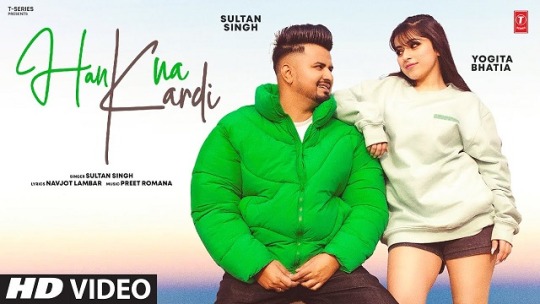
View On WordPress
0 notes
Text
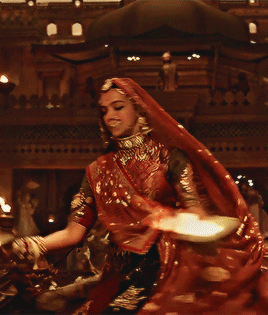

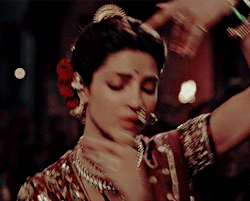
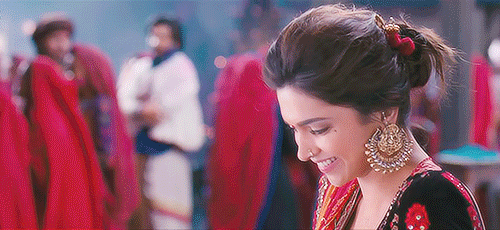

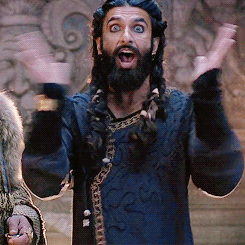
Sanjay Leela Bhansali's universe🥰
#my post#postlarım#sanjay leela bhansali#bollywood#indian movies#padmavaat#deepika padukone#devdas#aishwarya rai#bajirao mastani#priyanka chopra#ram leela#gangubai kathiawadi#alia bhatt#alauddin khilji#sultan alauddin khilji#ranveer singh
123 notes
·
View notes
Text
1 note
·
View note
Text
https://haanji.com.au/internal-uproar-shromani-akali-dal-jathedar-removal
#shromani akali dal#internal dissent#jathedar removal#giani raghbeer singh#giani sultan singh#party crisis#annual budget#teja singh samundri hall#haanji radio#radio haanji#news in punjabi#radio haanji australia’s number radio station
0 notes
Link
Puneet Issar, Mugdha Godse, Grusha Kapoor, Veeraj Rao, Tara-Alisha Berry, Kanchi Singh, Rakesh Bedi, Aakkash Dabhade, Ishtiyak Khan, Amol Khairnar, Pravin Chandra, Aseem Ali Khan, Chaudhary Manikk, Karan Solanki, Sultan
#Puneet Issar#Mugdha Godse#Grusha Kapoor#Veeraj Rao#Tara-Alisha Berry#Kanchi Singh#Rakesh Bedi#Aakkash Dabhade#Ishtiyak Khan#Amol Khairnar#Pravin Chandra#Aseem Ali Khan#Chaudhary Manikk#Karan Solanki#Sultan Ansari#Hariom Tiwari#Shipti Sabharwal#Amit Shrivastava#Mujahid Siddqui#Amandeep Singh
0 notes
Text
Did you know that the first map of the Himalayas was made in the 1500s by the Catalan monk Antoni de Montserrat, and it was so accurate that it was used by European expeditions until the 1800s?
Here's the story of a priest that was called by a Mughal emperor for interfaith intercultural dialogue and who ended up being -among other things- a royal teacher, a writer, a geographer, a fake Armenian merchant, and a prisoner.

Antoni de Montserrat was born in 1536 in Vic (Catalonia). He studied in Barcelona (Catalonia) and Coimbra (Portugal) to become a priest and joined the Jesuits. In 1574, he was sent on a mission to Goa (back then a Portuguese colony, now part of India).
The Mughal emperor Akbar was an open-minded man. He was Muslim but wanted to learn about the other religions, so he called representatives of different religions to his court in Fatehpur Sikri. In 1579, he called the Jesuits to explain Christianity, and the Jesuits sent Antoni de Montserrat. Everyone in the court -Muslims, Christians, Buddhists, Hindus- knew that the point was not to convert others, but to reach a better understanding through debate.
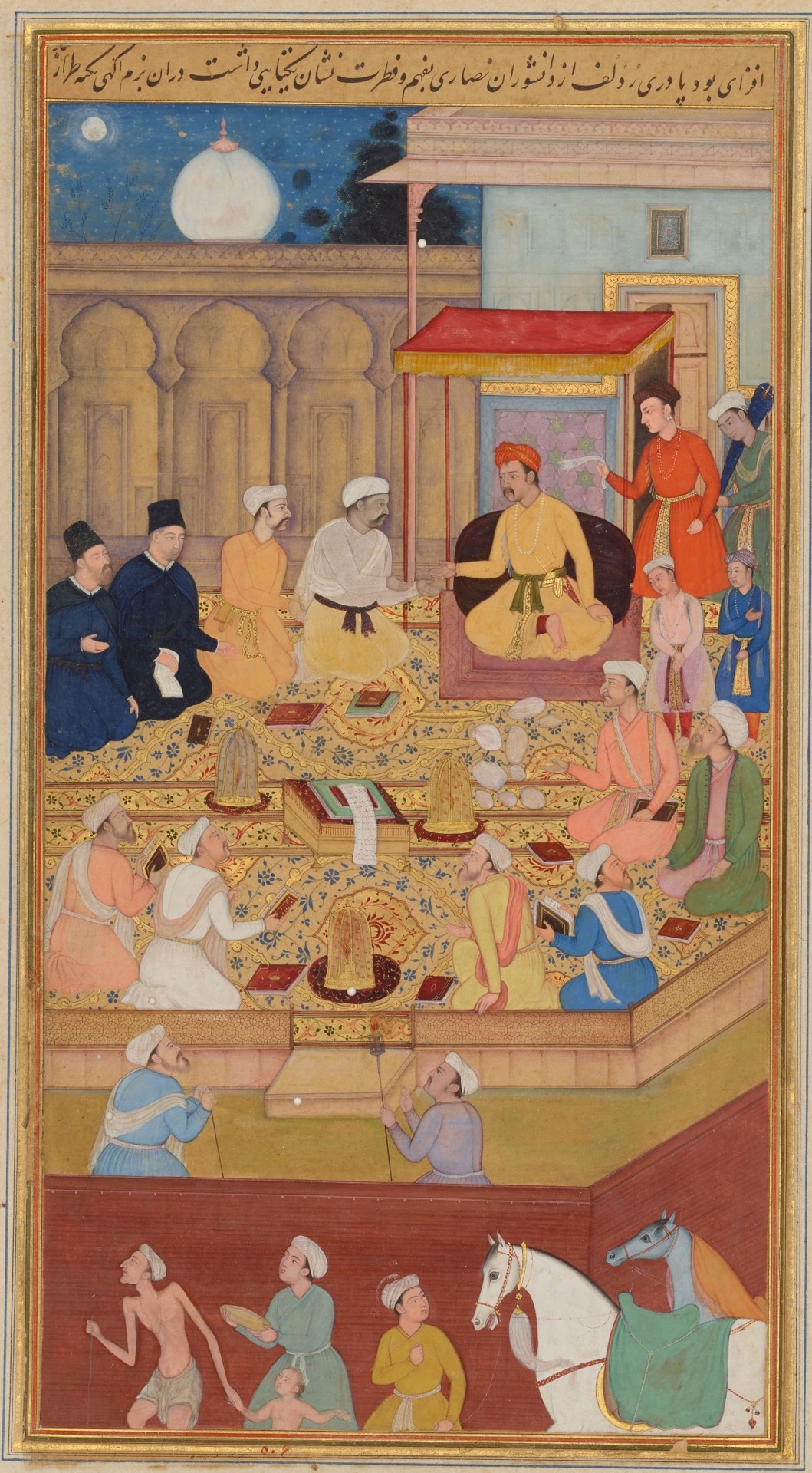
The Mughal emperor Akbar holding an assembly with religious men. The two men dressed in black are Jesuits. Miniature painting by Nar Singh, 1605. Chester Beautty Library.
The emperor Akbar valued Antoni de Montserrat as a great wise man and chose him to become the tutor of his second son Murâd. Antoni learned Persian (the language of the Mughal court) and accepted. He remained close to the emperor and accompanied him in the military campaign when the emperor's step-brother started an uprising in Bengala. Crossing much of Northern India, Kashmir, Pakistan, Afghanistan, and Tibet on elephant gave him the perspective to draw the map.
In the end, Antoni went back to Goa in 1582. There, he wrote a book explaining what he had seen in the Mughal Empire, the cultural differences he had experienced, the political organization of these territories, and describing emperor Akbar's court. This book is called Mongolicae Legationis Commentarius, and its descriptions of the lands he has travelled include the earliest description of Tibetans known in Europe since Marco Polo and the first ever map of the Himalayas.

Antoni de Montserrat's map of the Himalayas and their surroundings, including large parts of what nowadays is India, Tibet, Pakistan, and Afghanistan. Library of St. Paul's Cathedral, Kolkata (India).
This book explains cultural elements of the different cultures under the Mughal Empire and also the conversations Antoni had with the emperor about certain habits. For example, Antoni writes about how the Brahmans (upper caste Hindu priests) force widows to be burned alive in the same funeral pyre as their dead husbands, often (when the women resist) drugging them or through violence. Antoni tries to get emperor Akbar to stop this terrible tradition, but doesn't succeed. On the other hand, Antoni also tells the emperor Akbar that they should burn the "men who dress as women" who live in the emperor's court, to which the emperor bursts laughing out loud and doesn't give any consideration to. Despite their different cultural backgrounds, Antoni and Akbar were friends.
Antoni's time in the Mughal Empire ended in 1588, when the king Philip II of Castilla and I of Portugal orders Antoni and a young Spanish priest named Pedro Páez to go to Ethiopia to convince the Coptic Christian Ethiopians to get closer to the Catholic Christian Church. Then, Antoni and Pedro dressed up as an Armenian merchants to border the Ottoman Empire through Iraq, Syria, and Egypt, trying to avoid the pirates of the Indian Ocean. However, before reaching Ethiopia, they took a ship to skirt modern-day Oman, but the captain turned them in as soon as they reached land in Yemen. Then, Antoni and Pedro were taken on a camel caravan to the Sultan of Hadhramaut (Yemen), who imprisoned them until 1595 and then sentenced to galleys in the Red Sea, and later imprisoned them again. Luckily for them, king Philip paid their rescue and they were freed in 1596. With his body weakened by the galleys and the mistreatments of prison, Antoni retired to a convent in Salsette (modern-day Mumbai, India), where he died in 1600 right after having finished his map.
The Spanish priest who travelled with him, Pedro Páez, also wrote his own diary explaining what they lived. With his descriptions, we know that in Yemen Antoni and Pedro were given what he describes as a kind of herbal tea called "cahua, water boiled with a fruit named bun and which is drank very hot, instead of wine": that is a drink that was still unknown in Europe at the time, which we now call coffee.
Maybe you have heard the name Pedro Páez before, too. After accompanying Antoni to Goa, he went to Ethiopia again, successfully this time. In Ethiopia, he became the first European to reach the source of the Blue Nile.
Information sources: David Montserrat Nonó (La Mira), Sociedad Geográfica Española. If you want to read Antoni de Montserrat's book, it has been translated from Latin to Catalan and to Spanish by Josep Lluís Alay.
#història#antoni de montserrat#pedro páez#mughal empire#mughal#history#catalonia#catalan#renaissance#european history#asian history#asia#india#indian history#interfaith#geography#1500s#16th century#travel#other countries
76 notes
·
View notes
Text
Shocking! Local man goes in expecting to see anti Muslim propaganda period piece, walks out so hard he is dizzy, from Delhi Sultanate era bisexual blowjob allegory. Can't even enjoy SLB films anymore. Because of woke.
#when the movie is so islamophobic it inadvertently makes the invaders look sexy#shonen hero homoeroticism effect
11 notes
·
View notes
Text
Wander.
(mixtape - side a)

Challa - A.R. Rahman, Rabbi, Gulzar
Ek akela is sheher mein - Bhupinder Singh
Kun faya kun - A.R. Rahman, Javed Ali, Mohit Chauhan
Aaj jaane ki zid na karo - Farida Khanum
Iktara - Amit Trivedi, Kavita Seth, Amitabh Bhattacharya
Bin tere - Vishal-shekhar, Shafqat Amanat Ali, Sunidhi Chauhan
Haule haule- Sukhwinder singh
Saibo -Sachin-jigar, Shreya Ghosal, Tochi Raina
Balam pichkari -Pritam, Vishal Dadlani, Shalmali Kholgade
Badtameez dil - Prtam, Benny Dayal, Shefali Alvares
Uff Teri adaa - Shankar Mahadevan, Alyssa Mendonsa
Aao Milo chalo - Pritam, Shaan, Sultan Khan
Ae zindagi gale laga le - Ilaiyaraaja, Amit Trivedi, Arijit singh
Jhumritalaiya - Pritam, Arijit Singh, Mohan Kannan
Yesterday - the Beatles
Je t'aime - Vishal-shekhar, Vishal Dadlani, Sunidhi Chauhan, Jaideep Sahni
A/n: these are the songs for the first five chapters of wander!! why the first five?? because that is as far as i have made it in terms of outlining the basic story (bear with me, i'm not fast with this stuff) i'm so excited to write this fic tho i'll start posting and reblogging on a regular basis from may !! i'll still be online but i wont be posting more than a few reblogs every now and then (ty for being patient with my fics ik they take time but i'll make them worth your while!!)
also thank you for liking 'you, me, lonely' so much <3333
taglist: @luvsersi @bitch-biblioklept @avianawrites @lauenderhaze @kaverichauhan @hollandweather @procrastinationprincesses @eddiesguitarskills let me know if u wanna be added or removed from the taglist <3
#steve harrington x reader#steve harrington#steve harrington x reader angst#steve harrington angst#steve harrington x you#steve harrington x reader fluff#steve harrington x desi!reader#desi!fem!reader#desi!reader
28 notes
·
View notes
Text
Link Sade Lyrics
Singer:Sultan SinghAlbum:Preet Sukh Ho rep puri high rakhi aeHo babe ne chadai rakhi aeHo hater ne rehan machdeHo thaal ke tabahi rakhi ae Ho link sade kamm kardeMuhan utte chup baliye Ho area ch thuk baliyeHo lit saadi look baliyeJadd shehar tere geda maardaNaaran jandiya ne ruk baliye Halatan de sikhaye hoye aaHo unj assi vadh na padheHo on the spot thokiyeOye je koyi baada sir te…
0 notes
Text
Events 7.12 (before 1920)
70 – The armies of Titus attack the walls of Jerusalem after a six-month siege. Three days later they breach the walls, which enables the army to destroy the Second Temple. 927 – King Constantine II of Scotland, King Hywel Dda of Deheubarth, Ealdred of Bamburgh and King Owain of the Cumbrians accepted the overlordship of King Æthelstan of England, leading to seven years of peace in the north. 1191 – Third Crusade: Saladin's garrison surrenders to Philip Augustus, ending the two-year siege of Acre. 1335 – Pope Benedict XII issues the papal bull Fulgens sicut stella matutina to reform the Cistercian Order. 1470 – The Ottomans capture Euboea. 1488 – Joseon Dynasty official Choe Bu returned to Korea after months of shipwrecked travel in China. 1493 – Hartmann Schedel's Nuremberg Chronicle, one of the best-documented early printed books, is published. 1527 – Lê Cung Hoàng ceded the throne to Mạc Đăng Dung, ending the Lê dynasty and starting the Mạc dynasty. 1543 – King Henry VIII of England marries his sixth and last wife, Catherine Parr, at Hampton Court Palace. 1562 – Fray Diego de Landa, acting Bishop of Yucatán, burns the sacred idols and books of the Maya. 1576 – Mughal Empire annexes Bengal after defeating the Bengal Sultanate at the Battle of Rajmahal. 1580 – The Ostrog Bible, one of the early printed Bibles in a Slavic language, is published. 1691 – Battle of Aughrim (Julian calendar): The decisive victory of William III of England's forces in Ireland. 1776 – Captain James Cook begins his third voyage. 1789 – In response to the dismissal of the French finance minister Jacques Necker, the radical journalist Camille Desmoulins gives a speech which results in the storming of the Bastille two days later. 1790 – The Civil Constitution of the Clergy is passed in France by the National Constituent Assembly. 1799 – Ranjit Singh conquers Lahore and becomes Maharaja of the Punjab (Sikh Empire). 1801 – British ships inflict heavy damage on Spanish and French ships in the Second Battle of Algeciras. 1806 – At the insistence of Napoleon, Bavaria, Baden, Württemberg and thirteen minor principalities leave the Holy Roman Empire and form the Confederation of the Rhine. 1812 – The American Army of the Northwest briefly occupies the Upper Canadian settlement at what is now at Windsor, Ontario. 1862 – The Medal of Honor is authorized by the United States Congress. 1913 – Serbian forces begin their siege of the Bulgarian city of Vidin; the siege is later called off when the war ends. 1913 – The Second Revolution breaks out against the Beiyang government, as Li Liejun proclaims Jiangxi independent from the Republic of China. 1917 – The Bisbee Deportation occurs as vigilantes kidnap and deport nearly 1,300 striking miners and others from Bisbee, Arizona. 1918 – The Imperial Japanese Navy battleship Kawachi blows up at Shunan, western Honshu, Japan, killing at least 621.
2 notes
·
View notes
Text
From Priyanka Chopra, Alia Bhatt, and Kareena Kapoor to Dulquer Salmaan: Indian Celebrities Condemn Israel’s Attack on Rafah, Extend Solidarity with Gaza
In the wake of the Israeli airstrike that reportedly claimed the lives of 45 individuals in Rafah, numerous Indian celebrities have stepped forward to denounce the violence.

The devastating airstrike, which caused a fire in a tent camp in the Gazan city of Rafah, has sparked outrage not only among global leaders but also within the Indian film fraternity. Following the incident late Sunday night (IST), several A-list celebrities have taken to social media platforms to condemn Israel’s actions and express solidarity with Gaza. Among these notable figures are Priyanka Chopra Jonas, Alia Bhatt, Kareena Kapoor Khan, Varun Dhawan, Sonam Kapoor, rapper Honey Singh, and Madhuri Dixit Nene.
Bollywood star Alia Bhatt utilized her Instagram stories to amplify a post by another user, which emphasized the importance of providing love, safety, peace, and life to all children. Accompanied by the hashtag “All Eyes On Rafah,” Bhatt's post served as a poignant reminder of the human toll of the conflict.
Similarly, Kareena Kapoor Khan shared a post from the United Nations International Children’s Emergency Fund (UNICEF), condemning the Israeli attack. The post highlighted the tragic loss of life, particularly among children, and called for an immediate ceasefire and the release of all hostages.
Numerous other celebrities, including Varun Dhawan, Sonam Kapoor, Madhuri Dixit Nene, Samantha Ruth Prabhu, Dulquer Salmaan, and many more, joined the chorus of condemnation by sharing a viral image bearing the words “All Eyes On Rafah” on their respective Instagram stories. The collective outcry from these influential figures underscores the urgency of the situation and the need for international attention and action.
According to reports from news agency Reuters, survivors of the airstrike recounted the harrowing experience of families sheltering in the Tel Al-Sultan neighborhood when the strike occurred. The tragedy unfolded amidst an ongoing ground offensive by Israeli forces in the east of Rafah.
In response to the incident, Israeli Prime Minister Benjamin Netanyahu acknowledged a "tragic mistake" and pledged to investigate the matter. However, the airstrike has reignited concerns over Israel’s ongoing conflict with Gaza, which began on October 7, 2023, following an attack by the militant group Hamas.
The vocal condemnation from Indian celebrities serves as a powerful reminder of the human cost of conflict and the importance of advocating for peace and justice on the global stage. As the international community grapples with the aftermath of the Rafah airstrike, the solidarity expressed by these celebrities offers hope for a peaceful resolution to the longstanding conflict in the region.
3 notes
·
View notes
Text
A Glimpse into the Spiritual and Cultural Richness of Jammu and Kashmir
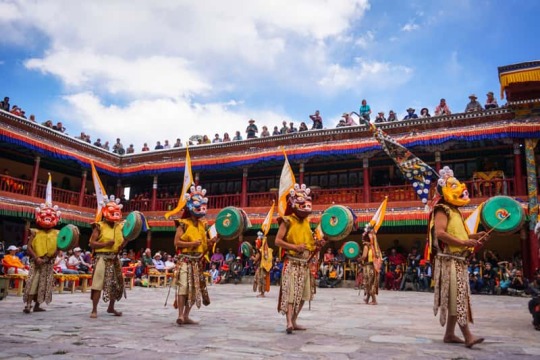
Kashmir, often referred to as "Paradise on Earth," is renowned for its breathtaking landscapes, serene lakes, and snow-capped mountains. Beyond its natural beauty, Kashmir is also a land rich in religious and cultural heritage. The region is home to diverse religious places in Kashmir and there are vibrant festivals in Jammu and Kashmir that reflect its historical and spiritual significance.
Religious Places in Kashmir
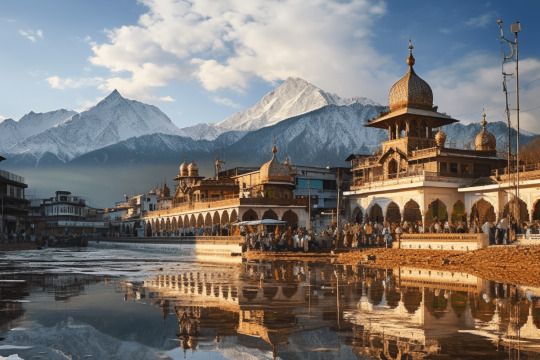
1. Shankaracharya Temple: Perched on the Shankaracharya Hill, the Shankaracharya Temple is one of the oldest and most revered Hindu shrines in the Kashmir Valley. Dedicated to Lord Shiva, this ancient temple is believed to have been visited by Adi Shankaracharya in the 8th century. The temple offers a panoramic view of Srinagar and the Dal Lake, making it a spiritual and visual treat for visitors.
2. Hazratbal Shrine: Located on the northern shores of the Dal Lake, the Hazratbal Shrine is the holiest Muslim shrine in Kashmir. It houses a relic believed to be a hair of the Prophet Muhammad. The shrine's pristine white marble structure and its serene surroundings attract devotees and tourists alike. The annual celebrations during the festivals of Eid and Milad-un-Nabi see a significant influx of pilgrims.
3. Amarnath Cave Temple: The Amarnath Cave Temple is one of the most important Hindu pilgrimage sites, dedicated to Lord Shiva. Situated at an altitude of 3,888 meters, the temple is famous for the naturally occurring ice Shiva Lingam. The annual Amarnath Yatra, which takes place in the summer months, draws thousands of devotees who undertake a challenging trek to pay their respects.
4. Jama Masjid: Situated in the heart of Srinagar’s old city, the Jama Masjid is a stunning example of Indo-Saracenic architecture. Built in 1394 by Sultan Sikandar, it features 378 wooden pillars and an expansive courtyard. The mosque is not only a place of worship but also a center for social and cultural gatherings.
5. Kheer Bhawani Temple: Located in the village of Tulmulla, about 25 kilometers from Srinagar, the Kheer Bhawani Temple is dedicated to Goddess Ragnya Devi. The temple is named after the rice pudding (kheer) that is offered to the goddess by devotees. The annual festival of Mela Kheer Bhawani, held on the occasion of Zyestha Ashtami, sees thousands of devotees thronging the temple.
Festivals in Kashmir
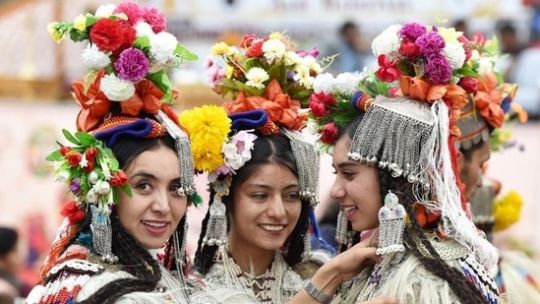
1. Navroz: Navroz, the Persian New Year, is widely celebrated by the Shia Muslim community in Kashmir. It marks the beginning of the spring season and is a time for family gatherings, feasting, and prayers. Traditional foods, such as lamb dishes and sweets, are prepared, and homes are decorated to welcome the new year.
2. Eid-ul-Fitr and Eid-ul-Adha: Eid-ul-Fitr marks the end of Ramadan, the holy month of fasting, while Eid-ul-Adha commemorates the willingness of Prophet Ibrahim to sacrifice his son in obedience to God. Both festivals are celebrated with great fervor in Kashmir. Special prayers are held in mosques, and families come together to share festive meals and distribute alms to the needy.
3. Maha Shivaratri (Herath): Maha Shivaratri, locally known as Herath, is a significant festival for Kashmiri Pandits. It is dedicated to Lord Shiva and Goddess Parvati and is celebrated with night-long vigils, prayers, and the offering of walnuts as a symbol of fertility. Special dishes, such as fish and rice, are prepared for the occasion.
4. Baisakhi: Baisakhi, primarily a harvest festival, is celebrated with enthusiasm by the Sikh community in Kashmir. It also marks the Punjabi New Year and the formation of the Khalsa in 1699 by Guru Gobind Singh. The festival involves prayers, kirtans (devotional songs), and community feasts known as langars.
5. Hemis Festival: The Hemis Festival, held in the Hemis Monastery in Ladakh (part of the greater Kashmir region), is a vibrant celebration dedicated to Lord Padmasambhava (Guru Rinpoche). The festival features colorful masked dances, traditional music, and rituals performed by the monks. It is one of the most significant Buddhist festivals in the region.
6. Tulip Festival: While not a religious festival, the Tulip Festival in Srinagar has become a major cultural event. Held in April, the festival showcases the stunning bloom of tulips at the Indira Gandhi Memorial Tulip Garden, Asia's largest tulip garden. The event attracts tourists from across the globe and highlights Kashmir’s natural beauty and cultural heritage.
Conclusion
Kashmir’s religious places and festivals are a testament to its rich and diverse cultural tapestry. These sacred sites and celebrations not only provide spiritual solace to the faithful but also offer a glimpse into the region’s historical and cultural richness. Visiting these places and participating in the festivals provides an enriching experience that deepens one’s understanding of Kashmir’s unique heritage.
4 notes
·
View notes
Text

"I know you're thinking I'm heartless. I'm just protecting my soul."
Banished Sultan Rahmi Abdul | He/Him | 41 | Brazil | FC: Ekin Koc
NAME: Banished Sultan Rahmi Abdul TITLE: Former Sultan of Turkey, Current Advisor of Madagascar AGE: 41 FACECLAIM: Ekin Koc SEXUALITY: Bisexual MARITAL STATUS: Legally married to Haspira Singh, Betrothed to Prince Lianstoa of Madagascar POSITIVE TRAITS: Sensitive, Tender, Congenial, Sensible NEGATIVE TRAITS: Naive, Cowardly, Spineless, Gullible, Mercurial
The Story (So Far):
A near mirror image of the first Sultan of Turkey, many anticipated much of the same. His nature, however, is entirely that of his mother's. Rahmi was warm, congenial, and cursed with the heart of an artist. No talent for swordsmanship or politics, though his natural athleticism in sprints and games bequeathed him a sturdy figure. By his seventeenth birthday, it was apparent - although he looked like his father, he was not the magnificent ruler the world imagined him to be.
A young, ruling Sultan - Rahmi's rule was riddled with darkness. Manipulated by advisors, whispered lies by his courts... It was not long before Rahmi leaned into the Machiavellian nature of the former Sultan. The string of compromises accumulating to one, superseding the rest; commanding the death of his brother's spouse, the ruling Sultan of Persia.
2 notes
·
View notes
Text
Price: [price_with_discount] (as of [price_update_date] - Details) [ad_1] Born in 1924 at kotla Sultan Singh, a village near Amritsar, Mohammed Rafi, nicknamed pheeko was the second youngest of hajji Ali Mohammed and Allah rakhi's six sons. He started singing early, deeply inspired by the songs of a wandering fakir, in the village. In the 1920s, circumstances compelled rafi's father to move to Lahore where he opened a small dhaba. Rafi's elder brother, Mohammed Deen, started a barber shop in no or Mohalla, Bhatti GATE in the same city, with Rafi lending him a helping hand. Meanwhile, Mohammed deen's friend, Abdul Hameed recognised rafi's talent and encouraged him to sing. Later, he convinced the reluctant family to allow him to take Rafi to Bombay. In 1944, The two arrived in an alien city from where Mohammed Rafi slowly won over the heart of an entire nation. Mohammed Rafi: Golden voice of the silver screen is the authorised biography of one of India's most beloved singers. ASIN : 9380070977 Publisher : Om Books International; 1st edition (28 May 2015); Om Books International, 107 Ansari Road, Daryaganj, New Delhi-110002, India, Tel.(11) 4000 9000, Fax, (11) 23278091 Language : English Hardcover : 272 pages ISBN-10 : 9789380070971 ISBN-13 : 978-9380070971 Item Weight : 450 g Dimensions : 22.8 x 15.2 x 4.7 cm Country of Origin : India Packer : Om Books International, 107 Darya Ganj, New Delhi - 110002 Generic Name : Books [ad_2]
0 notes
Text
"Machines Can See 2025" wraps in Dubai after two‑day showcase of AI
New Post has been published on https://thedigitalinsider.com/machines-can-see-2025-wraps-in-dubai-after-two%e2%80%91day-showcase-of-ai/
"Machines Can See 2025" wraps in Dubai after two‑day showcase of AI


The third edition of Machines Can See (MCS) Summit has concluded at Dubai’s Museum of the Future. More than 300 start‑ups pitched to investors from EQT Ventures, Balderton, Lakestar, e& capital and Mubadala, and more than 3,500 delegates from 45 countries attended the summit, while online engagement levels were high (4.7 million views). Real-time updates with the #MCS2025 hashtag are projected to exceed 5 million views.
The summit was hosted by UAE-based Polynome Group under the patronage of H.H. Sheikh Hamdan bin Mohammed bin Rashid Al Maktoum. Strategic backers included Digital Dubai, Dubai Police, Emirates, Amazon Web Services, NVIDIA, IBM, SAP, MBZUAI among others.
“In just three years, MCS has evolved from a specialist meet‑up into a true crossroads for the world’s top minds in science, business and public policy. The week proved that when researchers, entrepreneurs and governments share one stage, we move a step closer to transparent, human‑centred AI that delivers real value for society,” said Alexander Khanin, founder & CEO of Polynome Group
Landmark agreements announced live on stage
During the two‑day programme, several high‑profile agreements were signed at the summit, including:
A trilateral Memorandum of Understanding between Astana Hub (Kazakhstan), IT‑Park Uzbekistan and Al‑Farabi Innovation Hub (UAE), creating a Central‑Asia‑to‑MENA soft‑landing platform for high‑growth start‑ups.
A Google Cloud initiative offering no‑cost “Gen‑AI Leader” learning paths and discounted certification vouchers to accelerate responsible AI adoption across the region.
Polynome Group officially launched AI Academy, an educational initiative developed in collaboration with the Abu Dhabi School of Management and supported by NVIDIA’s Deep Learning Institute. The Academy will offer short executive seminars and a specialised four‑month Mini‑MBA in AI, aimed at equipping leaders and innovators with practical AI knowledge to bridge the gap between technology research and commercial application.
Policy & talent
Day one opened with a ministerial round‑table – “Wanted: AI to Retain and Attract Talent to the Country.” Ministers Omar Sultan Al Olama (UAE), Amr Talaat (Egypt), Gobind Singh Deo (Malaysia), Zhaslan Madiyev (Kazakhstan) and Meutya Hafid (Indonesia) detailed visa‑fast‑track programmes, national GPU clouds and cross‑border sandboxes designed to reverse brain‑drain and accelerate R&D.
Breakthrough research
Prof. Michael Bronstein (University of Oxford/Google DeepMind) demonstrated Geometric Deep Learning applications that shorten drug‑discovery timelines and model subatomic physics.
Marco Tempest (NASA JPL/MagicLab.nyc) blended GPT‑4o dialogue with mixed‑reality holograms, turning the stage into an interactive mind‑map.
Prof. Michal Irani (Weizmann Institute) showed perception‑to‑cognition systems capable of reconstructing scenes from a single gaze sequence.
Andrea Vedaldi (Oxford) premiered a 3‑D generative‑AI pipeline for instant city‑scale digital twins, while Marc Pollefeys (ETH Zurich/Microsoft) demonstrated real‑time spatial mapping at sub‑10 ms latency.
Industry workshops & panels
AWS ran a hands‑on clinic – “Building Enterprise Gen‑AI Applications” – covering RAG, agentic orchestration and secure deployment. NVIDIA’s workshop unveiled its platform approach to production generative‑AI on Hopper‑class GPUs, complementing its newly announced Service Delivery Partnership with Polynome Group’s legal entity, Intelligent Machines Consultancies. Dubai Police hosted a closed‑door DFA session on predictive policing, while X and AI workshops explored social‑data pipelines on GPU clusters.
The parallel Machines Can Create forum examined AI’s role in luxury, digital art and media, with speakers from HEC Paris, The Sandbox, IBM Research and BBC, culminating in the panel “Pixels and Palettes: The Canvas of Tomorrow.”
Prof. Marc Pollefeys, Director of the Mixed Reality and AI Lab at ETH Zurich and Microsoft, highlighted the role of cutting-edge technology in daily life: “We are at a turning point where technologies like spatial AI and real-time 3D mapping are moving from laboratories into everyday life, transforming cities, workplaces, and how we interact with the digital world. The Machines Can See Summit underscores how collaboration between researchers, industry, and policymakers accelerates this transition, bringing innovative solutions closer to everyone,” he said.
Ethical & security focus
Panels “Good AI: Between Hype and Mediocrity” and “Defending Intelligence: Navigating Adversarial Machine Learning” stressed the need for continuous audits, red‑teaming and transparent supply chains. Dubai Police, TII UAE and IBM urged adoption of ISO‑aligned governance tool‑kits to safeguard public‑sector deployments.
High‑profile awards
On Day Two, H.H. Sheikh Hamdan bin Mohammed bin Rashid Al Maktoum presented trophies for the Global Prompt Engineering Championship, for breakthroughs in multilingual, safety-aligned LLM prompting.
Key takeaways
The summit underscored three strategic imperatives for the decade ahead. Talent aviation – backed by unified tech visas, national GPU clouds and government‑funded sandbox clusters – is emerging as the most effective antidote to AI brain‑drain. Spatial computing is moving from laboratory to street level as sub‑10‑millisecond mapping unlocks safe humanoid robotics and city‑scale augmented‑reality services. Finally, secure generative AI must couple adversarial robustness with transparent, explainable pipelines before the technology can achieve mass‑market adoption in regulated industries.
#2025#3d#3D mapping#adoption#ai#AI adoption#Amazon#Amazon Web Services#amp#applications#approach#Art#Artificial Intelligence#Asia#aviation#AWS#BBC#border#Brain#bridge#Building#Business#canvas#CEO#certification#cities#Cloud#clouds#clusters#cognition
0 notes